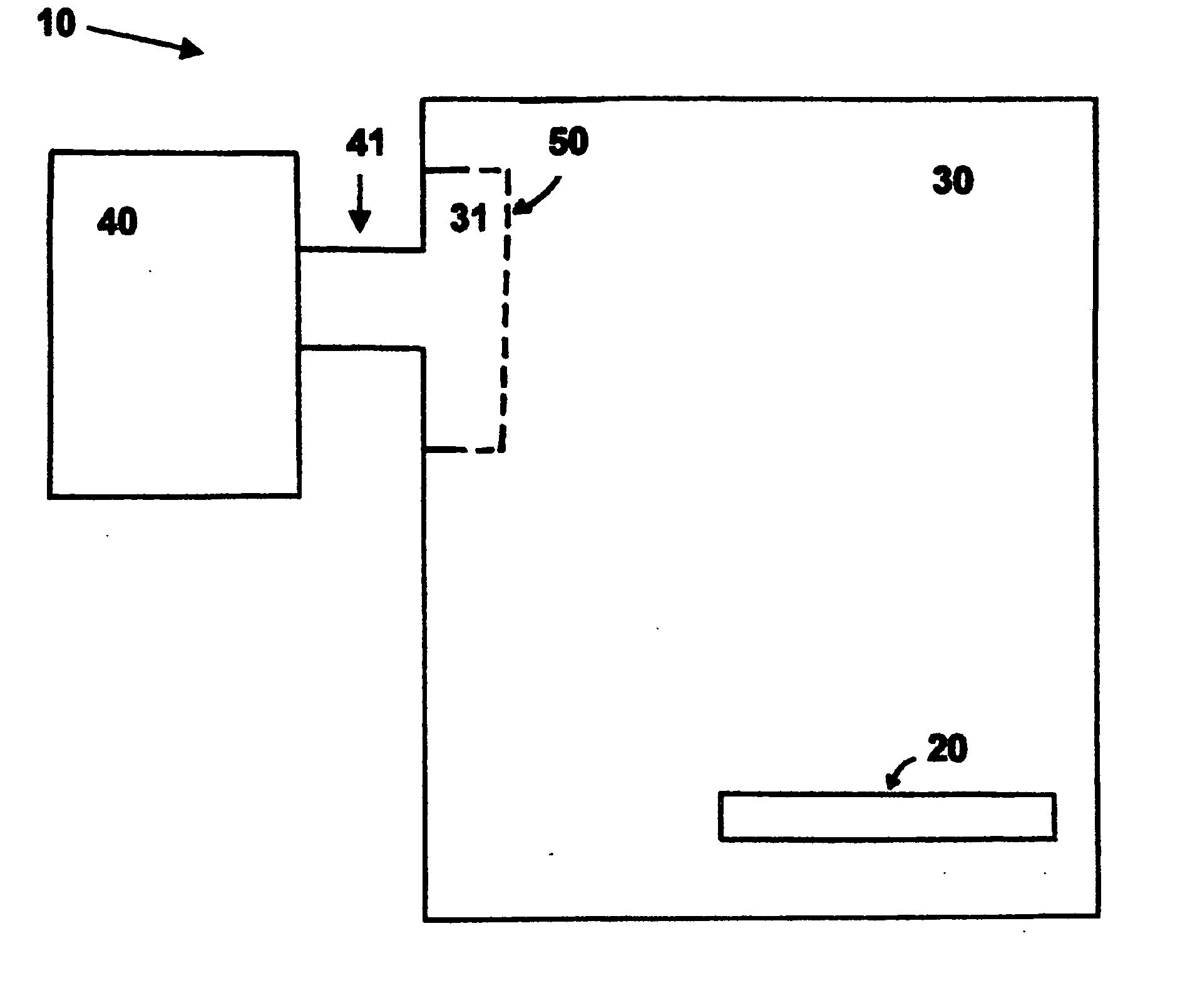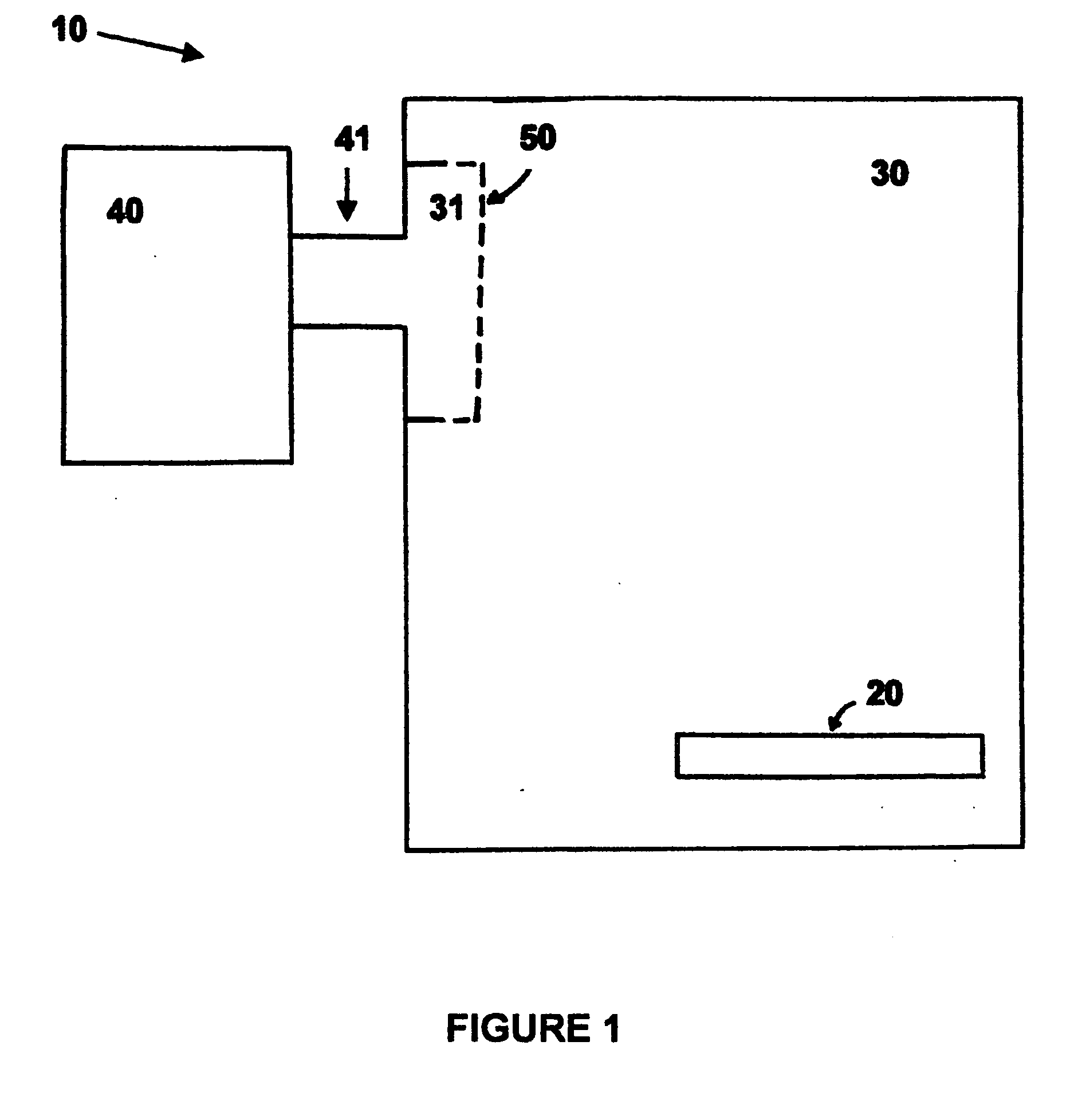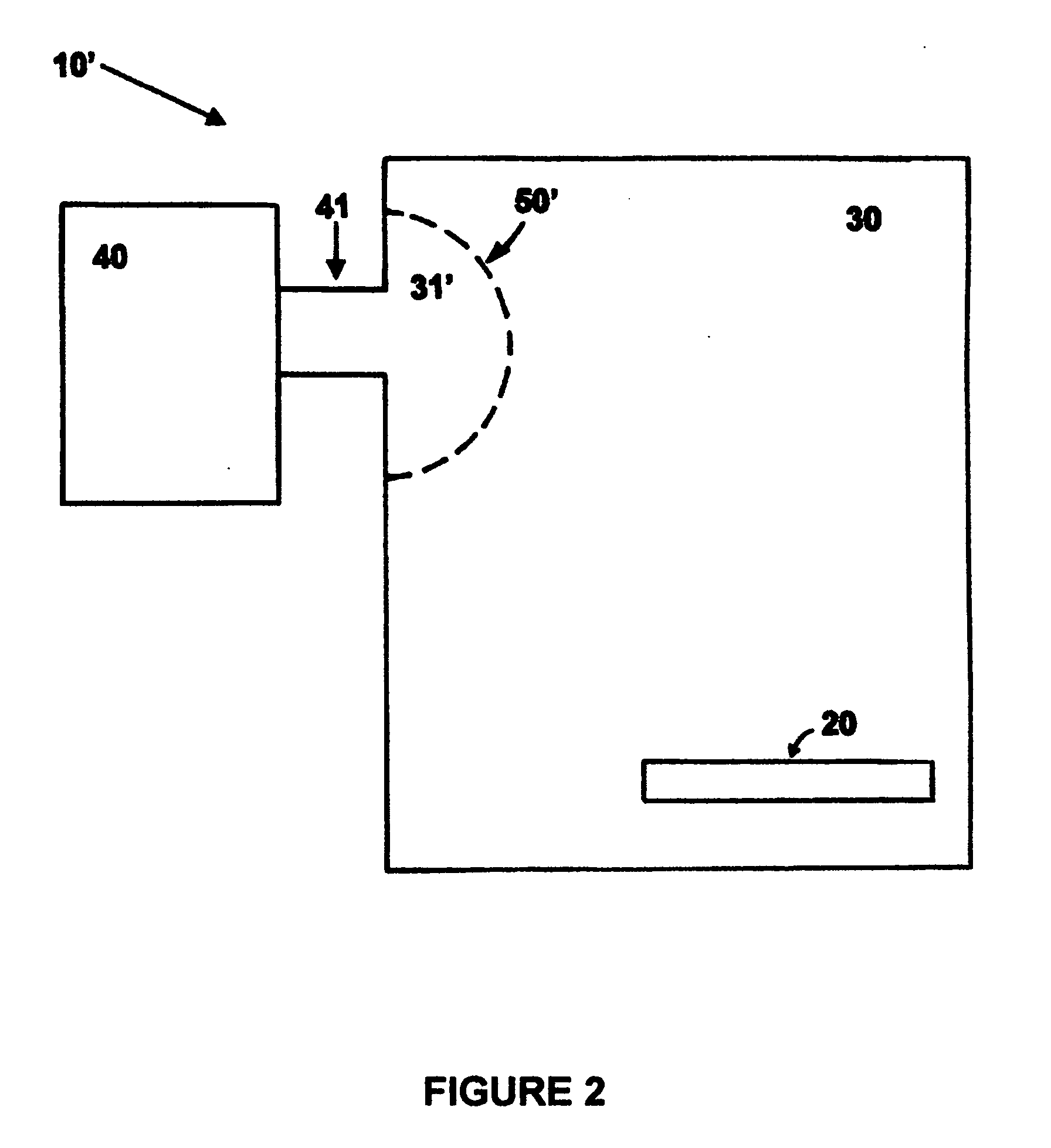Apparatus and method for microwave processing of materials
a technology of material processing and microwave energy, applied in microwave heating, electrical apparatus, electric/magnetic/electromagnetic heating, etc., can solve the problems of large deviation from the relatively uniform power distribution, significant non-uniformity in spatial power density of multi-mode cavity operating at fixed frequency, undesirable power concentration, etc., to achieve uniform microwave energy application, reduce the cost of microwave power source, and minimize the energy concentration in the near vicinity of waveguide entrance.
- Summary
- Abstract
- Description
- Claims
- Application Information
AI Technical Summary
Benefits of technology
Problems solved by technology
Method used
Image
Examples
example 1
[0051] To examine the effect of bandwidth on uniformity in conjunction with the inventive subcavity, a series of tests were performed using a MicroCure™ 2100 oven as described previously. A rectangular plate of uniformly lossy material was used as a test load, and in each run the plate was heated for 10 seconds at 200 W forward power, after which it was removed and immediately photographed with an IR thermal imaging camera to map the temperature distribution across its surface. All runs used a center frequency of 6.425 GHz, and frequency sweeps (±about the center frequency) of 0, 0.1438, 0.2875, or 0.575 GHz respectively.
[0052] With no subcavity installed, at fixed frequency the thermal distribution was highly nonuniform, with several distinct hot spots and a temperature range of 25-60° C. The uniformity gradually improved as bandwidth was increased and the temperature range narrowed to about 26-40° C.
[0053] The runs were then repeated using a “slanted box” subcavity as shown in F...
example 2
[0057] An applicator 71 was constructed with internal dimensions of 20″ diameter×36″ high. This applicator further had flat surfaces about 6″ wide running lengthwise at various locations around its circumference to provide convenient attachment points for the input waveguides. A cylindrical perforated metal sheet 55 approximately 11″ diameter×36″ high was placed inside, thereby forming a subcavity 34 having a generally annular shape. The diameter of this perforated plate was chosen to accommodate the outside dimensions of a wafer boat 72 holding 25 standard 8″ silicon wafers 73 (several of which are shown in the drawing). Microwave power was supplied by three 700 W C-band amplifiers 40 and fed through three separate waveguides 41 (two of which are shown for simplicity). Thus, all of the microwave power was launched into the same annular subcavity, but at several locations around the circumference and at different heights as indicated schematically in the figure. Three separate proce...
example 3
[0060]FIG. 10 shows a generally cylindrical applicator 71 with a generally annular subcavity 34 similar to that in EXAMPLE 2. Microwave power enters through one or more slotted waveguides 74 that run lengthwise within the subcavity 34. Thus, the slots 75 provide a first means of distributing energy, by providing multiple launch points along the length of the subcavity. The perforated boundary 55 of the subcavity 34 then provides a second means of further dispersing this energy so that greater uniformity may be achieved, as suggested by consideration of the schematic radiation patterns indicated in FIGS. 8A and 8C.
[0061] The apparatus shown in FIG. 10 has slotted waveguides running axially at several locations around the circumference of the cavity, with slots at various heights. Those skilled in the art will appreciate that a similar effect may be achieved by arranging several slotted waveguides running circumferentially (each at a different height). In this case, the slots would s...
PUM
 Login to View More
Login to View More Abstract
Description
Claims
Application Information
 Login to View More
Login to View More - R&D
- Intellectual Property
- Life Sciences
- Materials
- Tech Scout
- Unparalleled Data Quality
- Higher Quality Content
- 60% Fewer Hallucinations
Browse by: Latest US Patents, China's latest patents, Technical Efficacy Thesaurus, Application Domain, Technology Topic, Popular Technical Reports.
© 2025 PatSnap. All rights reserved.Legal|Privacy policy|Modern Slavery Act Transparency Statement|Sitemap|About US| Contact US: help@patsnap.com



